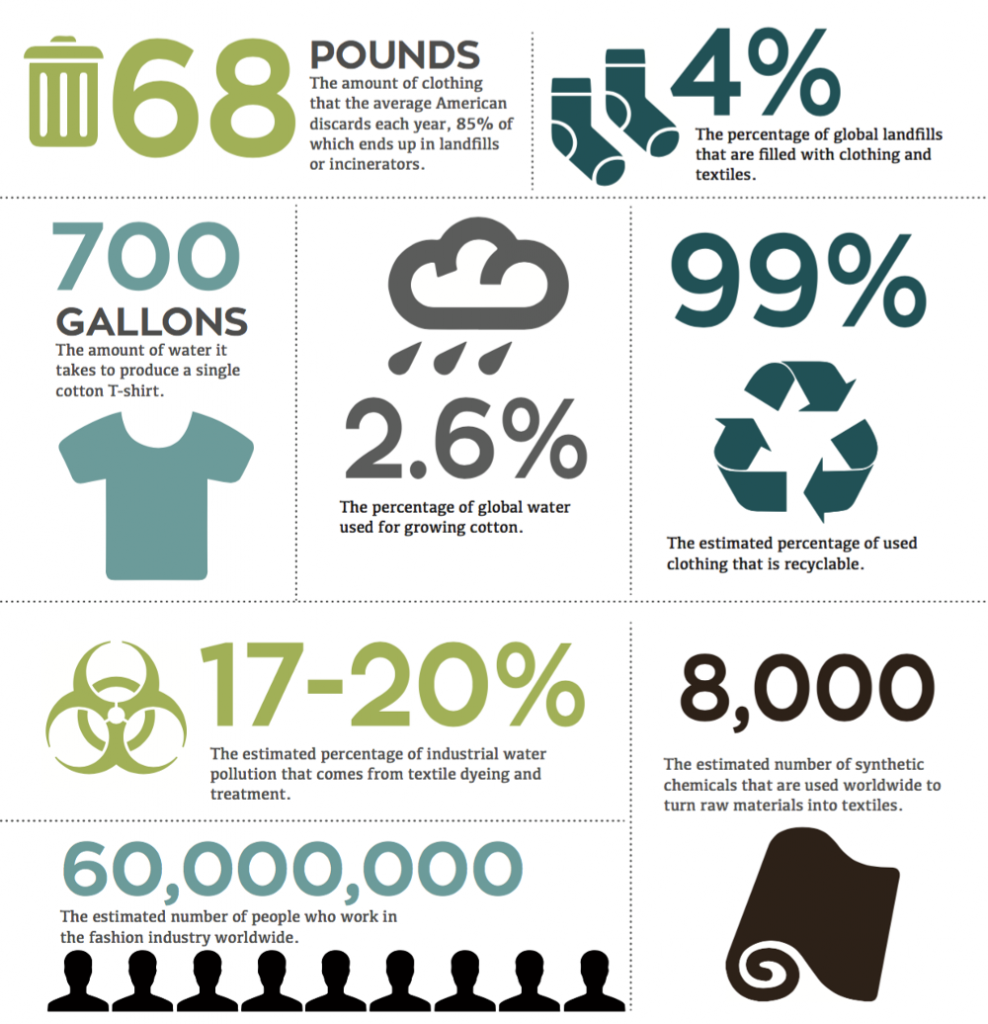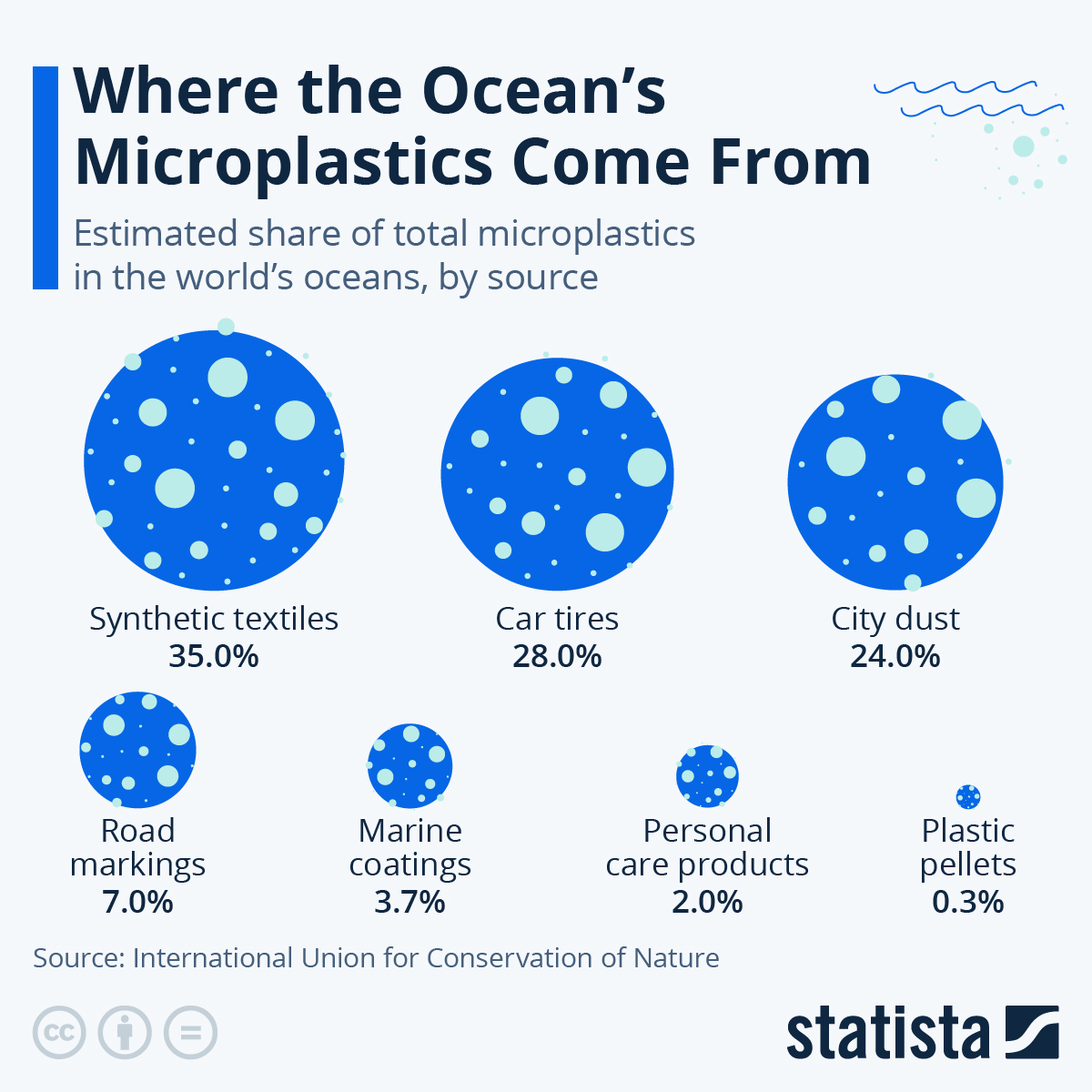
What is sustainable fashion and why do we care?
Let’s be honest. It’s hard not to be motivated these days to make a positive environmental change. Most cities have recycling programs that come to your door, and community gardens, waste reduction programs and ways to reduce our carbon footprint. There seems to be a lot more knowledge about how our efforts and lack thereof, can affect our environment. But there is one area that has a large impact on the environment, but that is very rarely addressed in the American home. What is that? Clothing. There is a movement, Sustainable Fashion, to reduce our environmental footprint through the clothing we buy.
Before we get into specific environmental impacts of our clothing choices, let’s take a look at what sustainable fashion actually is.
What is sustainable fashion?
Sustainable fashion, as defined by EarthDay.org, “refers to a clothing supply chain that is ecological and socially responsible.” Sustainable fashion exists to encourage consumers to move away from the fast fashion model, and toward more sustainable practices.

Why is it important?
The fashion industry has inflicted a massive toll on our Earth’s pollution. Second, only to oil, unchecked fashion practices have become one of our largest polluters, estimated at about 20% of all water pollution.
Today we are going to focus on one specific issue, microplastic pollution. Being that many of our clothes are made from plastics, aka “polyester”, or contain plastic products, we are experiencing a micro-plastic disaster caused by the clothes we wear.
What are microplastics?
Take a look at the back of your shirt or your kids shirt. What is it made of? Most of our clothing, especially inexpensive clothing, is made from plastic or “polyester”. Every time an article of polyester clothing is washed, microscopic bits of plastic and fibers are torn away. These particles are then released into our water and are then moved throughout our water systems to water treatment plants and facilities. Because the particles are so small, they pass right through filtration systems and end up in our oceans and seas. This in turn affects all the sea animals, including, you guessed it, the fish that we eat. It is estimated that there are about 200 million microfibers, per person released into our oceans. That is 1.4 trillion microplastics in our waters.

What can you do?
Seeing all of this information can for sure be overwhelming, but it doesn’t have to be! The smallest of changes can produce mighty impacts on our ecosystem. Start with a practice below that resonates with you and continue to research and ask questions. Here are 6 easy ways to start making a difference through your consumer choices:
- Choose clothes made from natural materials:
There are so many different eco-friendly fabric options to choose from now, like wool, organic cotton, and linen. Natural fibers such as wool and cotton have a lower environmental impact than synthetic fibers such as polyester. Not only are these better for our environment, but they are also better for kids! Natural materials are more breathable and hypoallergenic, allowing for more freedom of exploration for our children.
- Stay committed to removing fast fashion from your homes:
Places like Amazon and Target make it so hard to pass up fast fashion choices, especially for children’s clothes, but most of these choices are made from cheap plastic materials and in large factories with poor environmental regulations. Resist the temptation to buy a bunch of inexpensive “stuff” without meaning. Keep your money in your wallet and save it to buy from slow fashion brands that are committed to using natural eco-friendly materials and manufacturing processes.
- Beware of greenwashing:
A term coined by environmentalist, Jay Westerveld, greenwashing is a term used to describe companies who are more concerned with advertising their “eco-friendliness” than actually doing something about their own environmental impact. Companies who are committed to their sustainable approach will make it very clear with their data, which should be always accessible to consumers.
- Teach the next generation:
There isn’t much more impactful than a child with a mission. Teaching our children the importance of cultivating care of our Earth is vital, to ours and their continued enjoyment of our world. Bring your children with you as you start to change your shopping habits. Talk to them and encourage them to learn alongside you.
- Shop for the long haul:
When it comes to shopping for kids, it can be difficult to swallow the price tag on a sustainable wool set compared to a set of polyester thermals from Walmart that is priced at ½ the cost. Try to think of clothing for kids as an investment, in them and in our planet. Use buying sustainable clothing as a teaching point for your kids to help them understand where their clothes come from and why it matters.
6. Recycle or compost:
One of the biggest benefits of shopping for natural materials is that they can be recycled, upcycled, or composted! Do some research on your state’s recommendations for how to do this. A great resource for learning more about composting and recycling can be found here.Our children (and their children) deserve a clean planet. By teaching them early on, and by changing our own sustainability practices, we are helping to move away from the pollution we are creating and toward a cleaner world.
Let’s get to work.
Guest Post by Steffanie Ballinger
Sources:
https://www.earthday.org/campaign/sustainable-fashion/
https://immago.com/sustainable-fashion-important/
https://immago.com/microfibres-damaging-planet/


Leave a comment